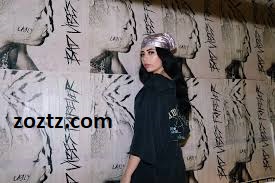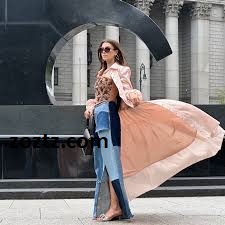Street Style: The Power of Personal Expression in Fashion

Street Style and Sustainability is not just about clothing—it’s a cultural movement, a creative outlet, and a global phenomenon that continues to shape the fashion world in unique ways. From the gritty sidewalks of New York City to the bustling streets of Tokyo, street style represents a fusion of individual identity, urban influence, and social awareness. Over the last few decades, street style has evolved from a niche subculture into a major influence on high fashion, with designers, celebrities, and fashion houses taking cues from the streets.
In this article, we will explore the origins of street style, its impact on fashion, and why it remains a powerful force in today’s fashion landscape. We will also look at how street style expresses personal identity and how social media has transformed the way street style is perceived and shared.
The Origins of Street Style:
Street style’s roots can be traced back to the late 20th century, particularly in urban areas where youth cultures began to create distinctive looks based on lifestyle and social influences. In the 1970s and 1980s, subcultures like punk, hip-hop, and skateboarding formed the foundation of street fashion. These groups were not just creating unique clothing; they were pushing back against mainstream fashion and the conventions of the fashion industry.
Punk and the Birth of Street Fashion:
In cities like London and New York, the punk movement revolutionized the fashion scene with its rebellious attitude and DIY aesthetic. The punk look—characterized by torn clothing, leather jackets, band t-shirts, and bold, often abrasive accessories—was about more than fashion. It was a political statement, rejecting the establishment in favor of self-expression. Designers like Vivienne Westwood and Malcolm McLaren embraced this aesthetic and made it mainstream, but it remained tied to the streets where it originated.
Hip-Hop and the Globalization of Street Style:
Simultaneously, in the U.S., the rise of hip-hop in the 1980s brought with it a new wave of street fashion. Baggy jeans, oversized t-shirts, baseball caps, and sneakers became synonymous with the hip-hop movement. The likes of Run-D.M.C. and LL Cool J began to wear sportswear brands like Adidas and Nike, turning what were once considered functional garments into symbols of style. Hip-hop’s influence on fashion expanded beyond the U.S. and made streetwear a global trend, connecting young people worldwide through a shared cultural language.
Skateboarding and the Subculture of Streetwear:
On the West Coast, skateboarding culture also played a significant role in the development of street fashion. Skateboarders, with their laid-back and functional aesthetic, favored comfortable clothing such as baggy pants, oversized tees, and hoodies. Brands like Vans and Study, originally born out of the skateboarding community, helped popularize the look. This style, which is both practical and laid-back, became emblematic of a generation that valued authenticity over trend-following.
Street Style and High Fashion:
For much of the 20th century, the fashion world was centered around haute couture, with designers presenting their collections in exclusive fashion shows in cities like Paris, Milan, and New York. High fashion was elite and aspirational, catering to a specific class of consumers. However, in the late 1990s and early 2000s, the lines between street style and high fashion began to blur.

Fashion Week and the Street Style Revolution:
Fashion weeks around the world became the stage where street style began to shine. While the runway shows were still dominated by haute couture, photographers started focusing on the street outside the venues, where fashion insiders, celebrities, and everyday people showcased their personal style. This shift was led by the rise of street-style bloggers and photographers like The Sartorialist (Scott Schuman) and Street Peeper (Phil Oh). Their images, captured on the streets, highlighted how people were incorporating fashion into their everyday lives, blending high-end designer pieces with more affordable, accessible items.
Suddenly, the idea that fashion could be both aspirational and accessible became a key message of the street style movement. Top designers and brands began to take inspiration from the street, incorporating elements of streetwear into their collections. This shift was seen in the work of designers like Marc Jacobs, who infused grunge influences into his 1993 Perry Ellis collection, and later in the collaboration between high fashion houses and streetwear brands like Louis Vuitton and Supreme.
The Role of Streetwear Brands:
As street style continued to influence high fashion, streetwear brands began to emerge as powerhouses in the fashion industry. Supreme, established in 1994 in New York, became one of the most iconic streetwear labels, known for its limited-edition items, collaborations with artists, and strong ties to skateboarding culture. Similarly, Off-White, founded by Virgil Abloh in 2012, bridged the gap between street culture and luxury fashion, with its signature diagonal stripes and quotation marks becoming symbols of a new generation of fashion enthusiasts.
These streetwear brands elevated the concept of “cool,” and their impact on the fashion industry cannot be overstated. Supreme’s collaborations with Louis Vuitton in 2017 and Off-White’s work with Nike are prime examples of how street style has transcended its origins and become an integral part of the luxury fashion world.
Street Style and Personal Identity:
One of the most significant aspects of street style is how it allows individuals to express their identity through clothing. Unlike the structured and uniform nature of traditional high fashion, street style is about experimentation and individuality. Whether it’s through the colors, patterns, or accessories they choose, people use their outfits to communicate who they are, what they stand for, and how they see the world.
Influences on Street Style:
Street style is deeply influenced by the cultural and social environment in which it emerges. For instance, in cities with a rich music scene like London or New York, street style often reflects the local music culture, with individuals adopting the looks of their favorite musicians or subcultures. Similarly, street style can be an expression of socio-political movements. The Black Lives Matter movement, for example, has influenced fashion in significant ways, with slogans, graphic tees, and fashion activism becoming a prominent part of streetwear. In cities like Paris and Milan, street style can take on a more high-fashion approach, with people experimenting with avant-garde designs and blending luxury pieces with thrifted items.

Gender Fluidity and Street Style:
Street style has also played a pivotal role in challenging traditional gender norms. Today, we see more and more people breaking away from the binary approach to fashion, embracing gender-fluid clothing and styles. The rise of androgynous fashion, as seen in the wardrobes of figures like Tessa Thompson and Billy Porter, has encouraged individuals to explore their own gender expression through street style. In this sense, street fashion becomes a way to redefine beauty standards and break free from the constraints of mainstream fashion.
The Influence of Social Media on Street Style:
The internet, particularly social media platforms like Instagram, has transformed the way we engage with street style. Today, street style is no longer confined to a few photographers or select fashion insiders—it is accessible to anyone with a smartphone. Social media allows individuals to share their personal style with a global audience, democratizing the fashion conversation. Influencers, celebrities, and everyday individuals now have the platform to showcase their unique looks, influencing trends in real-time.
The Rise of Influencers:
Influencers like Chiara Ferragni, Aimee Song, and Leandra Medine have turned street style into a business. By showcasing their daily outfits, these influencers have created multi-million-dollar empires, partnering with brands and collaborating with designers. They use their social media platforms to give followers a glimpse into their personal style and fashion choices, blurring the lines between traditional advertising and organic street style.
Hashtags and Viral Trends:
Social media has also facilitated the rise of hashtags and viral fashion trends. Platforms like Instagram have become a place where fashion lovers around the world can exchange style ideas, discover new trends, and gain inspiration from influencers, designers, and regular people alike. Hashtags like #OOTD (Outfit of the Day), #StreetStyle, and #FashionInspo allow users to share their looks with a global community, contributing to the spread of street fashion on an international scale.
Conclusion:
Street style has evolved from a rebellious subculture to a global fashion force, one that embraces individuality, creativity, and social consciousness. It has transformed the fashion landscape, influencing everything from runway shows to streetwear brands, and has given individuals the power to express themselves through their clothing. Today, street style is a reflection of a diverse and interconnected world, one where fashion is not just about following trends but about making a statement.
As we move forward, the role of street style will continue to evolve, with new generations using fashion as a tool for self-expression and social commentary. Whether it’s through bold new trends or a return to classic streetwear roots, street style will remain an essential part of the fashion dialogue. The streets, after all, are where culture, creativity, and identity collide, creating a vibrant tapestry that defines the future of fashion.
